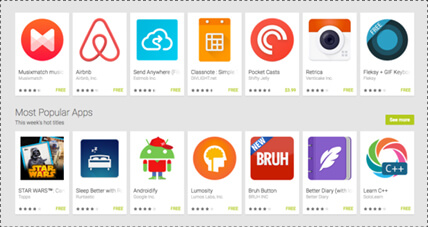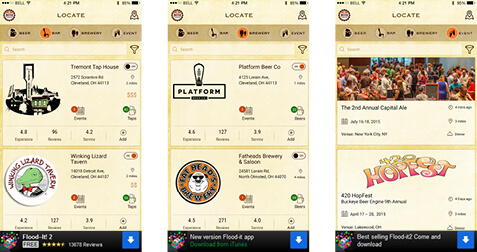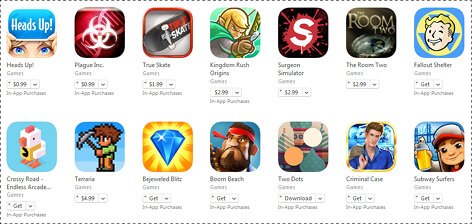App Monetization Business Models
A company invests money is developing an app and maintaining it. It is fair for them to expect revenues from their apps. App Monetization can help you to generate decent revenue and help you meet your expectations. Let us have a look at different models for different business requirements.

1) In-App Purchase
This business model will work with those applications wherein a virtual or physical sale is happening. In this model, you retain profits made by selling products, goods, and services through online apps. Companies can use the In-app purchase on their free apps as well to disable the ads. However, putting this in that may increase the user’s experience while it may influence revenue in long run.
2) Freemium
In this model, user can download the app for free but have an access to only the basic functions. The user has to pay the said amount to use other premium features. In this model, you need to have exceptional features that would encourage users to buy the premium features.
The best example of this model is Candy Crush. This app is free to download and use. However, you have to pay to use certain features or get extra life. Freemium model is successful in app market, especially for games app.
This model allows companies to generate revenue by attracting users to unlock features than investing on a separate marketing model. This is better explained in a report. Monetizing Digital Media: Trends, Key Insights and Strategies that Work by CMF Trends.

3) In-App Advertising
This is similar to Freemium wherein you don’t charge any amount to your user to use or download your app. However, once you have attained a good user base, you can sell your app space to advertisers. This is further classified as mobile application banner ad, mobile application interstitial ad and rich media mobile ad.

4) Paid Apps
As it says, the user is charged certain amount to download the app and use it. Free apps are competitors to this model since they offer similar features, free of cost. Hence, this model would work well if you are already an established brand or are offering your app in fair value.
Earlier this year, Andy Boxall from Business of Apps wrote in his blog that publishers are shifting from paid apps to in-app advertising and in-app purchase. His blog was based on the report published by Millennial Media.
Publishers using in-app advertising has grown to 9%. In 2014, the paid apps download has fallen to 34% as opposed to 45% in 2013. In-app purchases business model has also seen the growth from 33% in 2013 to 40% in 2014.

5) Subscriptions
If you are offering content to your users, then this app monetization model is perfect for your business. This, which is similar to Freemium model, allows your users to view limited content free of cost and would charge them to view the entire content. This model would suit those businesses that have something new to offer to the users on a regular interval.
Ben Davis analyzed media organizations to understand how they successfully carry out subscription model to monetize their app. In his blog, which was published on Econsultancy, he covered The Sun, The Times, The Guardian, The New York Times and The Wall Street Journal. Perhaps, this blog would give you a better idea on how you can utilize this model for monetization.

6) User Base Monetization
In this model, traction and growth is your main objective. You develop an application, get a good user base, and later sell it to the big venture at a good price. Instead of selling this to the enterprise, you can charge your users through above mentioned models or can sell units of your app to advertisers as well. The perfect example of this model is Facebook.
7) Selling intellectual rights of apps
There are moments when an app fails to create a mark in the market but its algorithm or research on the user base behavior is worthy. In such cases, you can sell off those to the enterprises. Also, you can either rent out or sell your infrastructure to the enterprises in order to get a return on the investment made on an app.
8) White Labeling & Templatization
For start-ups reaching out to the maximum potential customers could be a difficult task since they have limited resource and money. In such cases, you can identify an established company and give them the authority to brand your app amongst their clients. You can charge those enterprises for doing so and can generate enough revenue.
Developing an app and maintaining it is an expensive affair. With app monetization, companies can reach the breakeven point and sustain themselves in this competitive market. Above mentioned are some of the most popular models used by various companies for app monetization. Understand your requirement and choose the one that would fulfill your needs.
Author’s Bio

Pritam Barhate, with an experience of 10+ years in technology, heads Technology Innovation at Mobisoft Infotech, a mobile application development company. He has a rich experience in design and has been a consultant for a variety of industries and startups. At Mobisoft Infotech, he primarily focuses on technology resources and develops the most advanced solutions. You can follow him on @MobisoftInfo


